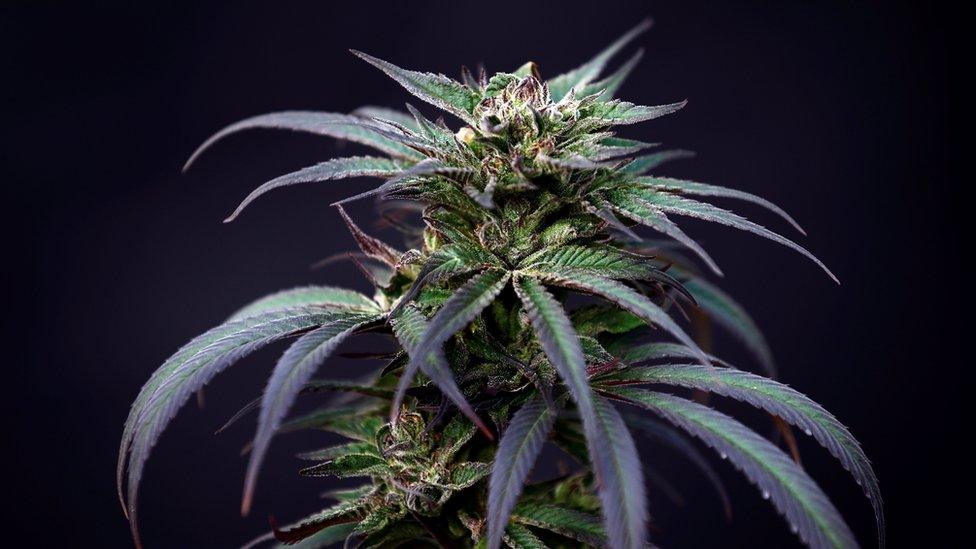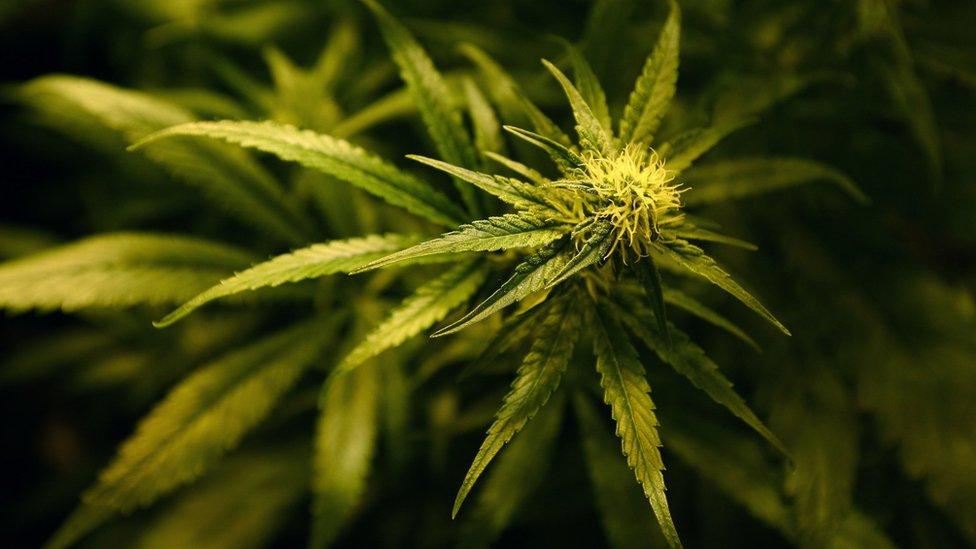420: Seven charts on how cannabis use has changed
- Published

Around the world, on the 20 April - or "420" - cannabis users will be lighting up to celebrate "weed culture" and protest about its prohibition in many countries.
But even though recreational cannabis has been illegal in the UK since 1928, the evidence shows that punishments for its possession have plummeted in recent years in England and Wales.
Comparative figures for policing in Scotland and Northern Ireland are not available.
Today cannabis is classified as a Class B - or middle-risk - substance.
Despite this, prosecutions are lower than when it was considered a low-risk, Class C drug in 2008.

In theory, possession of cannabis can still land you with five years in prison.
However, if you only have a small amount on you, then you are more likely to get a cannabis warning, often used for first offenders. These warnings do not show up on criminal records checks, but are recorded on the police database.
Repeat offenders could face a penalty notice (fine), a caution or prosecution.
A Home Office spokesperson said that enforcement of cannabis laws is "an operational decision for chief constables, but we are clear that we expect them to enforce the law".
Some police forces have openly changed tack towards small-scale users, with Somerset and Avon Police, for example, offering drug awareness courses for those caught with small amounts, while maintaining a tough approach to dealers and growers.
The drugs lead for the National Police Chiefs' Council, Assistant Chief Constable Jason Harwin, says it is up to chief constables to determine "operational priorities".
"However, there is strong evidence to suggest that recommending minor offenders for early intervention treatment instead of pursuing convictions can prevent reoffending and result in the best outcome for both the user and the criminal justice system," he says.
Despite this, the vast majority of police seizures are of fewer than five grams (0.18oz) - or about £25 street value in the UK., external

Last year, almost 36,000kg (79,000lb) of cannabis was seized by the police and Border Force, with the largest seizure weighing more than 100kg.
Racial disparities
A lot of the time, small-scale seizures of cannabis come from stop and searches, the police power which allows officers to search someone under the "reasonable" suspicion that they are engaged in an illegal activity.
Stop and searches disproportionately affect black people, who are nine times more likely to be searched for drugs than white individuals.
Research carried out by by the London School of Economics, external suggests this is why black people are so heavily represented in cannabis prosecutions, with more than 20% of those convicted being black people. who only make up 5% of the population.

In 2016, the College of Policing issued guidance saying that the smell of cannabis was no longer a good enough reason for a stop and search.
Currently, almost half of all stop and searches are linked to suspicion of drug possession.
Most popular illegal drug
Cannabis remains the country's most popular illegal drug.
In England and Wales, 30% - that's around 10 million - adults aged 16 to 64 have tried the drug at least once, according to the annual crime survey., external

Regular use is far less common, with only 3.3% of adults saying they had used it in the past week.
Among young adults cannabis is used more widely, but weekly use has more than halved since 2002, down to 7.3%.
Issues around health
The NHS warns that regular use of cannabis can lead to dependency, external, similar to alcohol, and severe mental health issues, such as psychosis.
In 2017-18, almost 55,000 people were receiving support for cannabis use in England, making it the fourth most-represented substance after opiates, crack cocaine and alcohol (although in many cases it is abused alongside other drugs).

The number of people under 18 who are receiving support stands at 12,066; a small decrease from a decade ago.
Because of its illegal nature, it is impossible to fully assess the potency - and therefore the health risks - of cannabis being sold on the street, but research in 2016 highlighted that people are being sold higher-strength strains of the drug.
The research comes as A&E admissions because of mental and behavioural problems linked to cannabis in England have increased by 50% in five years.

But when the chemicals in the plant are controlled, some evidence suggests medicinal cannabis, external can help patients suffering from illnesses such as epilepsy, multiple sclerosis or sickness linked to chemotherapy.
Towards the end of 2018, cannabis was reclassified to allow some cannabis-derived medicines to be prescribed by specialist doctors in limited situations, but so far very few prescriptions have been issued.
England's Chief Medical Officer, Prof Dame Sally Davies, has called for more research into the plant's benefits, so that any future guidance on prescribing cannabis-based medicines has a more solid scientific basis.
The UK is in a good position to lead this research.
According to the UN, the UK produced 44% of global cannabis plants intended for medicine and scientific research in 2016, even though the end product is still tightly restricted.

- Published19 June 2018
